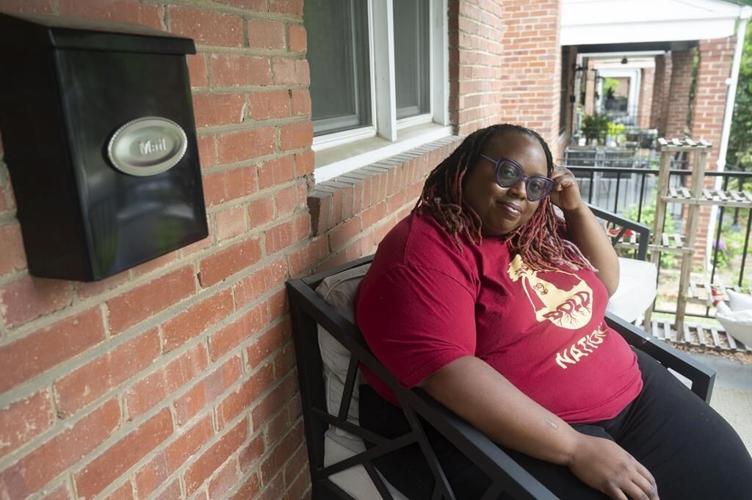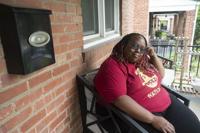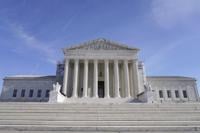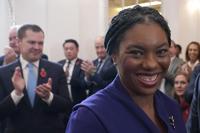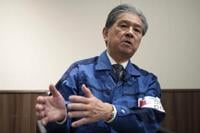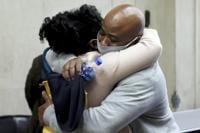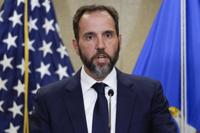WASHINGTON (AP) — As a Black student who was raised by a single mother, Makia Green believes she benefited from a program that gave preference to students of color from economically disadvantaged backgrounds when she was admitted over a decade ago to the University of Rochester.
As a borrower who still owes just over $20,000 on her undergraduate student loans, she had been counting on President Joe Biden's promised debt relief to wipe nearly all of that away.
Now, the student loan cancellation plan has been , which on Thursday in college admissions. Both policies disproportionately help Black students. To Green and many other people of color, the efforts to roll them back reflect a larger backlash to racial progress in higher education.
“I feel like working people have been through enough — I have been through enough,” said Green, a community organizer. “From a pandemic, an uprising, a recession, the cost of living price going up. I deserved some relief.”
The rulings could also have political consequences among a generation of young voters of color who took Biden at his word when he campaigned on canceling debt.
“Despite today’s upsetting ruling, we demand that the Biden Administration delivers on the promise of student loan debt relief,” said NAACP President Derrick Johnson, in a statement. “Education has long been regarded as a path toward generational wealth, economic liberation, and securing the American dream. Let’s be clear — student debt is killing that dream.”
The president's plan in federal student debt for borrowers, and doubled the debt relief to $20,000 for borrowers who also received Pell Grants. About half of the average debt held by Black and Hispanic borrowers would have been wiped out, according to the White House.
Six Republican-led states filed a legal challenge questioning whether the president, a Democrat, had authority to forgive the debt. On Friday, the the administration needed Congress’ endorsement before undertaking so costly a program.
Biden later Friday announced a , using a different justification from the one struck down earlier in the day. It uses a provision of the Higher Education Act allowing the education secretary to waive student loans. The plan would likely face another legal challenge.
In the affirmative action cases, the court was considering the use of that many selective colleges have used for decades to help build diversity on their campuses. The cases were brought by a conservative activist who argues the Constitution forbids the use of race in college admissions.
Together, the cases are crushing to Black Americans, the Rev. Al Sharpton said.
“The reality is race plays a factor in admissions, from pre-K to post-doctorate, and institutions just saw their best tool for fairness outlawed,” Sharpton said.
On student loans, Sharpton said: “Generations of Black youth were sold a bill of goods that higher education was a pathway out of poverty – only to be saddled with crushing debt that never lets them see their dreams fully realized.”
Both cases focused on policies that address historic racial disparities in access to higher education, as tend to take on disproportionately more debt to afford college, said Dominique Baker, an education policy professor at Southern Methodist University.
Backlash to racial progress tends to follow periods of social change and advancement, Baker said. In a study published in 2019, Baker found states were more likely to adopt bans on affirmative action when white enrollment at public flagship universities dropped.
“These are policy tools that have an explicit aim around reducing the power of white supremacy,” Baker said. The two court challenges, she said, can be seen “as linked backlash to two attempts towards racial justice.”
Green, who grew up in a low-income household in Harlem, New York, graduated from Rochester with about $40,000 in federal loan debt. Some of that was erased under a public service forgiveness program when she completed two terms with Americorps, and she whittled it down further with monthly installments until the government due to the pandemic. .
Green said she sees both court cases as connected to conservative . Critics say opposition to such programs is rooted in questions of fairness and in white grievances over the advancement of nonwhite people.
“This is white supremacy at work,” Green said. “This is a long tactic of conservative, white supremacist-leaning groups to use education and limit Black people’s access to education, as a way to further control and oppress us.”
In the 1960s and 1970s, many colleges developed affirmative action plans to address the fact that many predominantly white schools struggled to attract people from historically disadvantaged and underrepresented communities. Policies were also created to promote greater inclusion of women.
Since the late 1970s, the Supreme Court had three times in college admissions on grounds that institutions have a compelling interest to address past discrimination that shut nonwhite students out of higher learning. Justices had also agreed with arguments that more diverse student bodies promoted cross-racial understanding.
Some students and advocates worried about how the ruling would affect diversity on campuses.
Tarina Ahuja, a rising senior at Harvard College, said being part of a diverse student body has been a crucial part of her undergraduate experience. She recalled classes where students discussed their lived experiences on topics such as police violence, colonialism and labor movements — discussions that would have fallen flat without a diverse range of student perspectives.
In anticipation of a ruling against race-conscious admissions, some colleges have been to get a better picture of an applicant’s background — an approach seemingly . Others have been planning to boost recruiting in racially diverse areas. But in states that have already banned affirmative action, similar efforts at selective colleges have .
Jonathan Loc, a graduate student at Harvard who helped organize teach-ins in support of affirmative action, said that for students of color, it's impossible to speak about their lives without mentioning race, whether through hardships faced or simply their pride in their cultural heritage.
“I grew up as the son of refugees in a low-income community and a single-parent family burdened with the model minority myth,” he said. “But I think that that kind of narrative also helps me to be an Asian American focused on racial justice, focused on making sure that everyone who has a unique story related to their racial background or any background has that story heard.”
It will be important for colleges to find ways to show they see the students as more than a number on paper, said Damon Hewitt, president and executive director of the Lawyers’ Committee for Civil Rights Under Law.
“We need the schools to say, 'Look, the court says we can’t consider race, but we still see you,'” said Hewitt, whose organization defended affirmative action before the Supreme Court in October.
___
Editor's note: A previous version of this story misstated the restart of student loan payments. They start on Oct. 1.
___
The Associated Press education team receives support from the Carnegie Corporation of New York. The AP is solely responsible for all content.
___
Annie Ma and Aaron Morrison are members of AP's Race and Ethnicity team. Follow Ma on Twitter: . Follow Morrison on Twitter:

